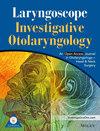Impact of Single-Side Deafness on Listening Effort: A Prospective Comparative Study
Abstract
Objective
Single-sided deafness (SSD) impairs sound source localization and speech recognition in noisy environments, requiring greater listening effort from affected individuals. Using pupillometry, this study aimed to investigate listening effort across two cognitive dimensions: selective attention and working memory in patients with SSD.
Methods
Forty-six participants were divided into a unilateral deafness (SSD) group and a normal hearing (NH) group. They completed two tests involving word and sentence recognition tasks, with accuracy and pupil diameter changes serving as indicators of listening effort and cognitive resource allocation. The main pupillary indices calculated and analyzed were baseline pupil diameter, peak value, and mean diameter.
Results
The results showed that auditory threshold and signal-to-noise ratio (SNR) significantly influenced the accuracy of behavior. Pupillometry results for selective attention revealed a progressive increase in pupil diameter in the SSD group after the alert period of listening, with levels significantly higher than that of the NH group. During working memory tasks, participants with SSD demonstrated an initial increase in pupil diameter, followed by a decline throughout the task, suggesting persistent cognitive strain and potential fatigue.
Conclusion
Patients with SSD exert greater listening effort during daily communication. The findings emphasize the importance of personalized rehabilitation strategies targeting speech perception and auditory comfort to enhance communication outcomes and overall well-being for patients with SSD.
Level of Evidence
4


 求助内容:
求助内容: 应助结果提醒方式:
应助结果提醒方式:


